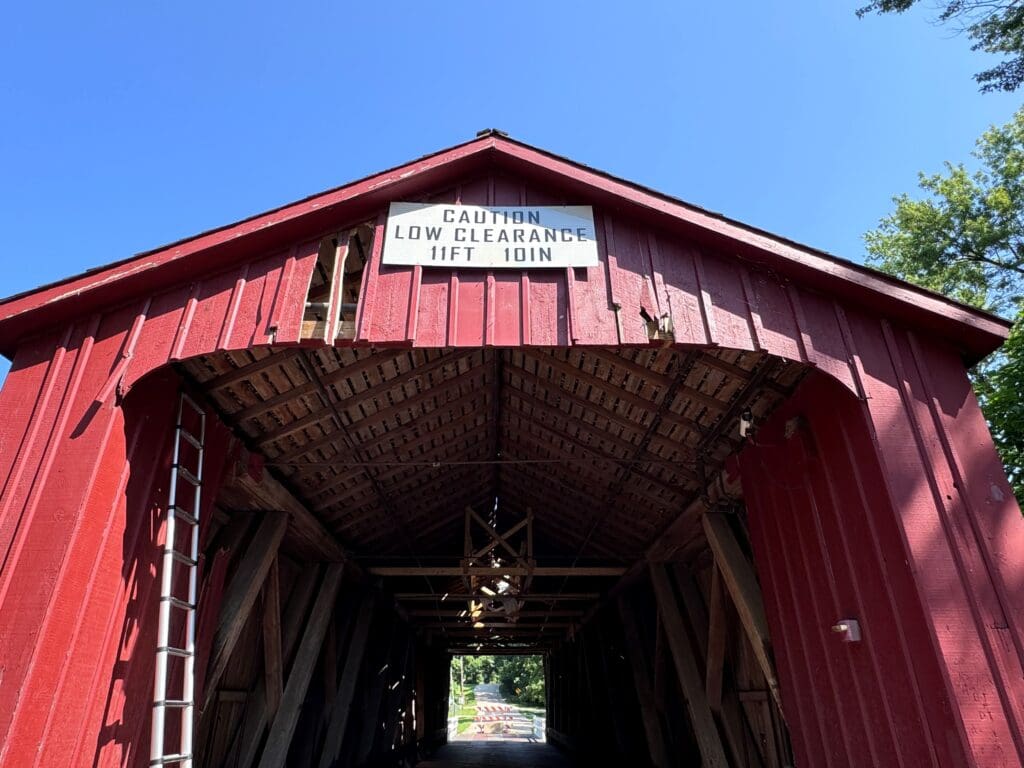Restoring a 160-year-old structure that was originally designed to support horse-drawn wagons presents some interesting challenges, which is where V3’s structural engineers come in. Discover the historical sensitivity and structural expertise needed to bring an important landmark back to its former glory.
A bridge to the past
Founded in the early 1830s, Princeton, Illinois cares deeply about its history, including its notable Red Covered Bridge: a one-lane structure built in 1864. Constructed with a timber truss, this 150-ft long bridge transports travelers back in time with every trip, with an antique warning sign that reads, “Five dollar fine for driving more than 12 horses or mule or cattle at one time or for leading any beast faster than a walk on or across this bridge.”
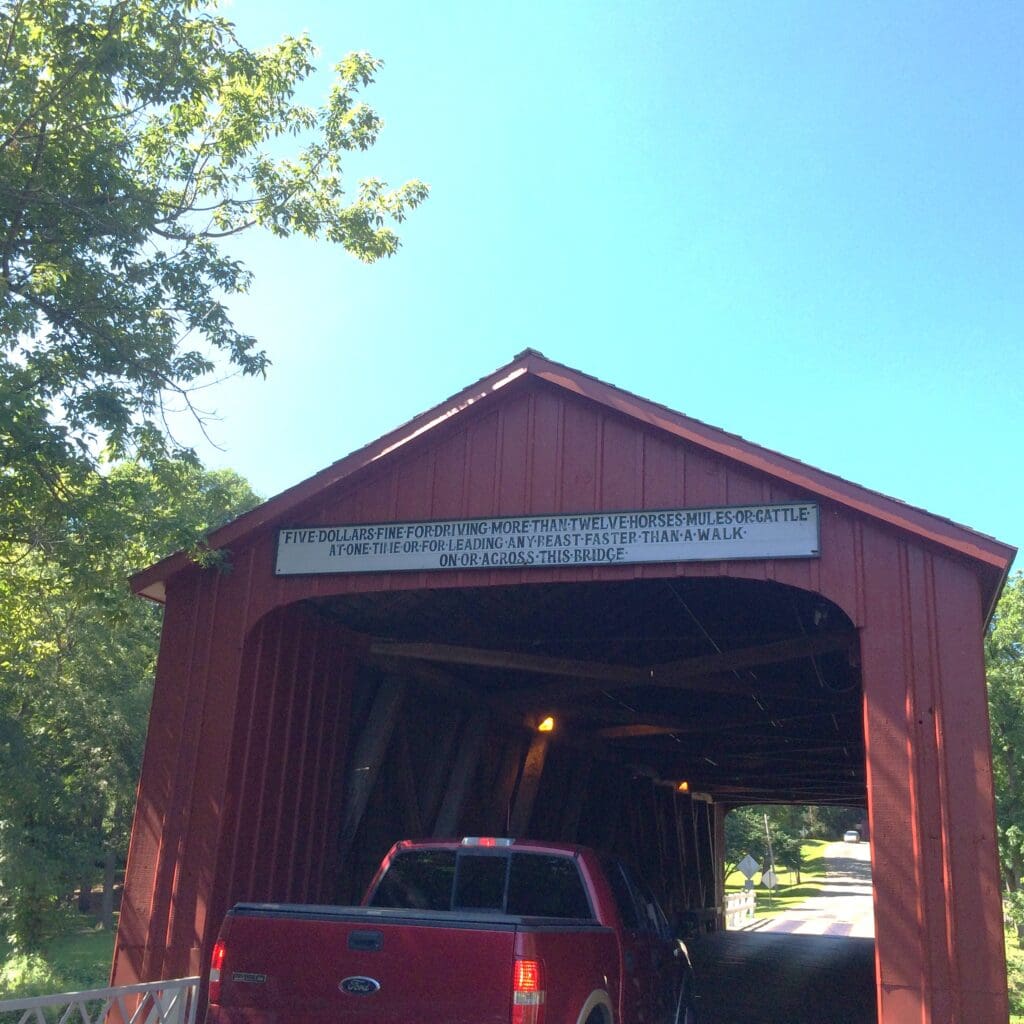
As Illinois’ last original, operational covered bridge, the Red Covered Bridge proudly sits on the historic register and is a popular landmark with locals and tourists alike. Last winter, the bridge was victim to a truck accident that damaged the roof, requiring extensive restoration.
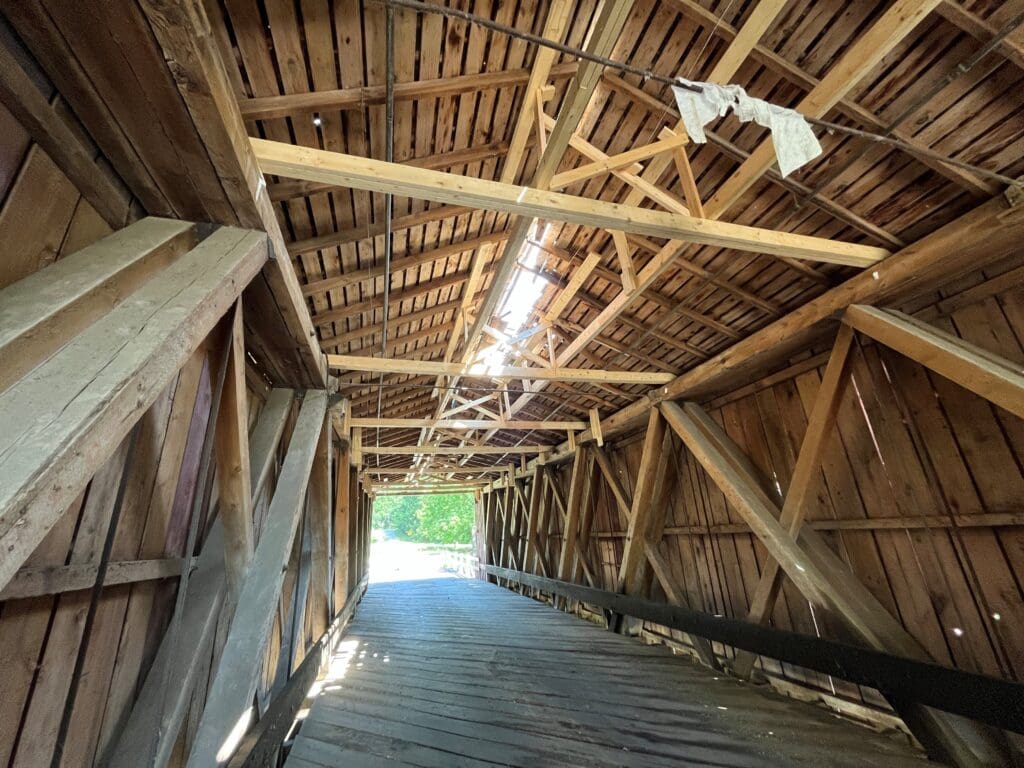
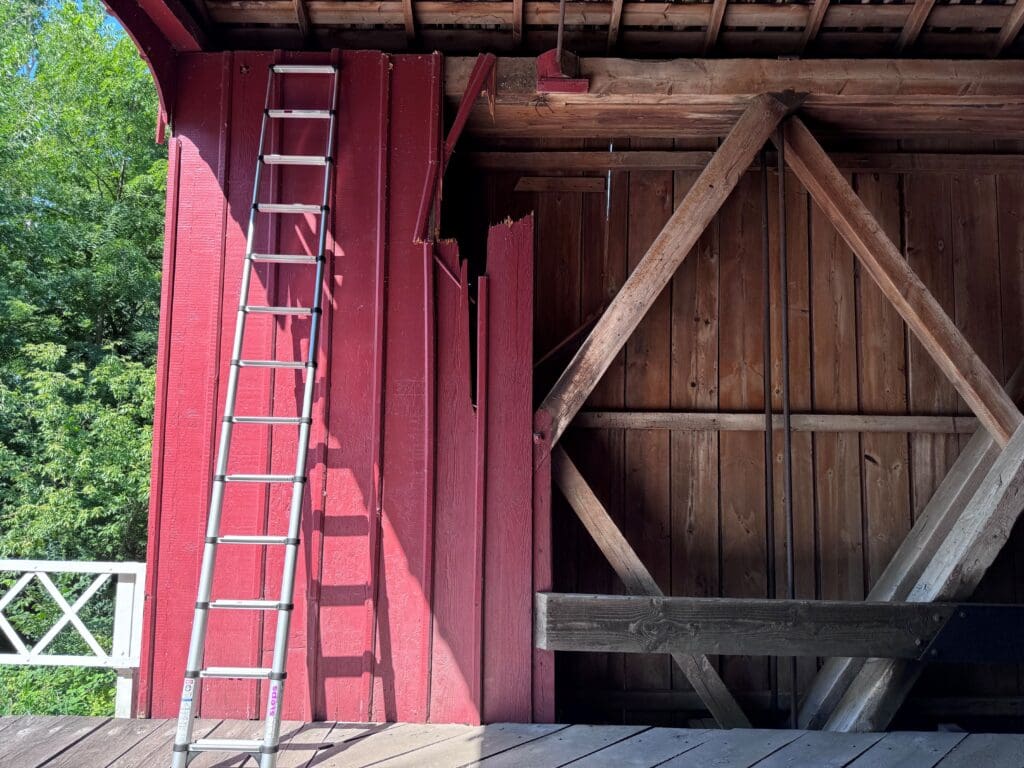
Historically accurate, structurally sound
Our experts were hired for Phase I engineering to plan the repairs for this piece of history. While modern bridges follow standard building codes and best practices, finding historically accurate repair methods has been an exciting journey for our team. There are not many covered bridges left in the United States, and because most were built nearly two centuries ago, there’s no record of their construction plans.
Additionally, the National Register of Historic Places and State Historic Preservation Office set strict guidelines to uphold the integrity and history of registered landmarks. Structures cannot be significantly changed during repairs, meaning our engineers have to uncover the correct materials and methodology to keep the 1864 design intact.

“Similar to a mechanic working on a car from 1920, there aren’t many of those models left on the road, making their repair a challenge. Building covered bridges is a lost art, but we’re committed to preserving those lost details and maintaining the historic integrity of the bridge.”
Bill Vegrzyn, P.E., S.E., Structural Project Manager
The Red Covered Bridge crosses the Bureau Creek, so to inspect the underside without putting strain on the damaged structure, we flew drones to get to closest possibly look. This technique proved very successful especially since the river was high. We’ve also collaborated with restoration carpenters to uncover historical building techniques. The roof’s connection to the truss is very unique and not typical to the 19th century, so planning next steps takes considerable care.
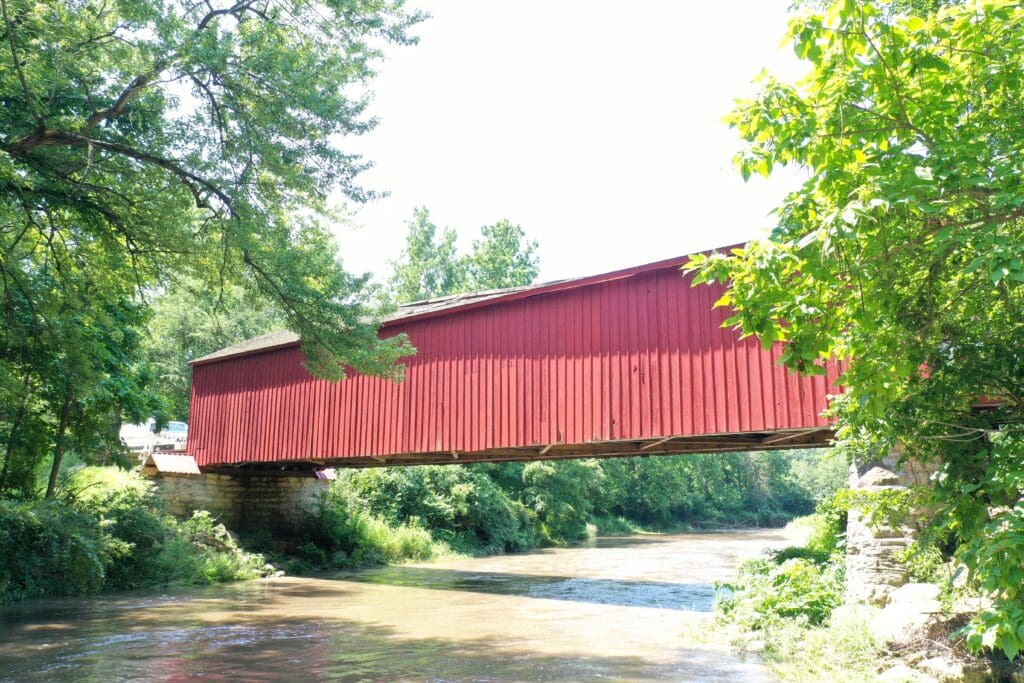
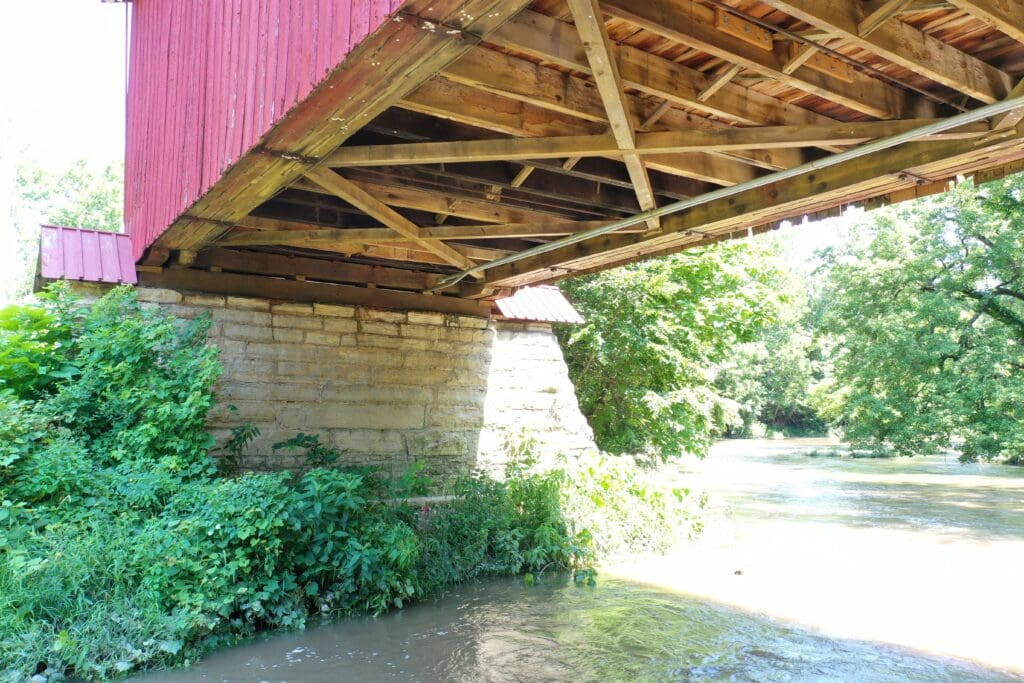
Supporting future travel
Preserving the past is important, but in order for the Red Covered Bridge to stay operational it must also adhere to today’s load ratings. While some modern maintenance has been performed over the years, this endeavor is the bridge’s largest improvement to date. Calculating the load rating of a covered bridge is difficult because they behave much differently than typical bridges; computer models help run the necessary tests to determine capacity and performance.
This project is part of a larger Illinois Department of Transportation contract that includes four bridges requiring a wide scope of structural services. V3’s structural engineers manage the repairs, restoration, and maintenance of bridges and structures across the Midwest, rising to any and all challenges.

“Not many people can say they worked on an original covered bridge. This gave us the opportunity to work on something unique and maintain a piece of history.”
Dave Greifzu, P.E., S.E., Senior Project Manager
Work with V3’s Structural Engineering experts
Ensuring that a structure can withstand the stresses of its environment and remain safe, stable, and secure is a critical component of any project plan or bridge assessment. Connect with our team to learn more.

